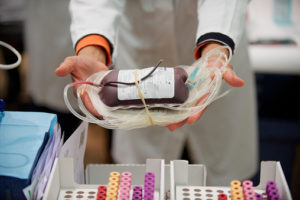Most blood collection agencies require a 56-day minimum interval between donations of whole blood to allow hemoglobin levels to return to normal. However, new insight from recent studies, including research published in Blood, suggest that the deferral should be lengthened to prevent iron deficiency. Researchers compared hemoglobin levels and iron parameters over 180 days in 24 new male donors and compared them to 25 regular male donors who have donated more than 10 times. Over the 180 day observation period, regular donors had lower levels of hemoglobin, ferritin and hepcidin, while erythropoietin and soluble transferrin receptor were higher compared to new donors. Although hemoglobin indices returned to normal by day 57, both groups of donors had low levels of ferritin at day 57 compared to pre-donation levels. Only 25% of new and 32% of regular donors had returned to baseline levels. After 180 days, all regular donors and 82% of new donors had reached baseline ferritin levels. The study authors suggest ferritin levels may be used to determine personalized donation intervals, or the donation interval should be increased to 180 days to avoid iron deficiency in all donors. More research is needed to confirm these results and investigate trends in female donors.
Reference:


The document “Improving blood availability and transfusion safety in the Americas”, approved by the Directing Council of the Pan American Health Organization (PAHO) in 2008, states “38.The number of repeat donors needed in each country should be estimated at least as 50% of the national need of red blood cells….. and to have them donate at least twice a year”. PAHO launched the “Pledge 2 safe lives” campaign, to promote the donation of two units of blood each year.